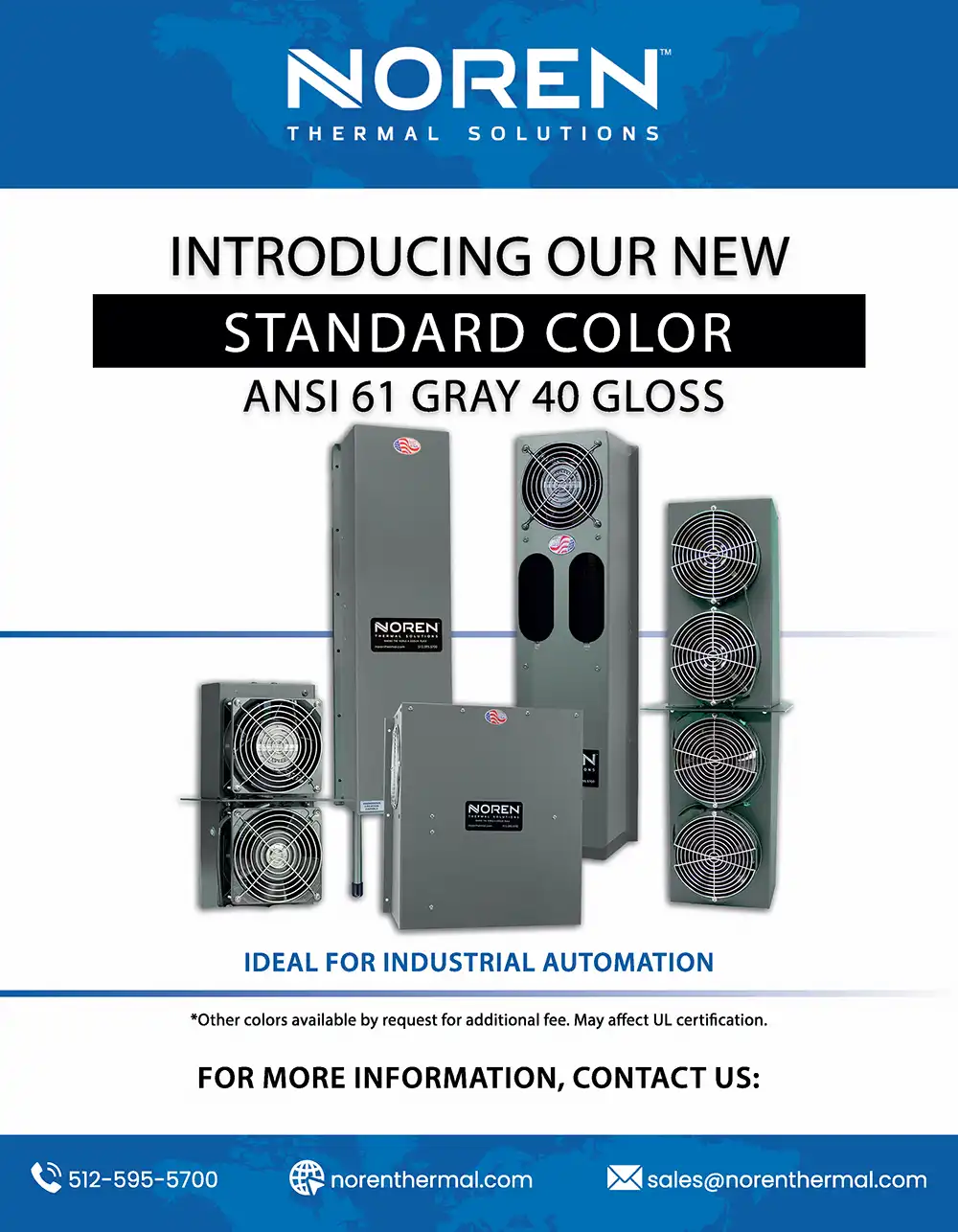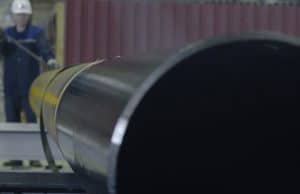 The impacts of technological improvements have been felt in every area of life, including more streamlined methods of electrical cooling. However, those impacts are often felt most in the various manufacturing fields that rely increasingly more heavily on technology to enhance their operations. When it comes to electrical cooling methods, the most significant advancements have come in the form of heat exchangers and their ability to transfer electrical waste heat. This not only made thermal management more efficient and reliable than more traditional solutions, like air conditioners, but also helped companies significantly improve the efficiency of many of their overall operations. (more…)
The impacts of technological improvements have been felt in every area of life, including more streamlined methods of electrical cooling. However, those impacts are often felt most in the various manufacturing fields that rely increasingly more heavily on technology to enhance their operations. When it comes to electrical cooling methods, the most significant advancements have come in the form of heat exchangers and their ability to transfer electrical waste heat. This not only made thermal management more efficient and reliable than more traditional solutions, like air conditioners, but also helped companies significantly improve the efficiency of many of their overall operations. (more…)
How to Achieve Below-Ambient Cooling without Chilled Air
 With the advent of heat exchangers, many companies have enjoyed the benefits of more streamlined and efficient electrical cooling. For many applications, the key is utilizing natural heat transfer methods to keep temperatures inside of electrical enclosures at just above the ambient temperatures outside of them. Known as ambient cooling, this method has proven more than effective for most applications. However, in some cases, companies still require the ability to chill electrical enclosures to well below the ambient temperatures outside of them. Fortunately, modern heat exchangers are able to help companies achieve below-ambient cooling without the need for chilled air, which helps them benefit even more from the natural cooling methods of modern heat exchangers. (more…)
With the advent of heat exchangers, many companies have enjoyed the benefits of more streamlined and efficient electrical cooling. For many applications, the key is utilizing natural heat transfer methods to keep temperatures inside of electrical enclosures at just above the ambient temperatures outside of them. Known as ambient cooling, this method has proven more than effective for most applications. However, in some cases, companies still require the ability to chill electrical enclosures to well below the ambient temperatures outside of them. Fortunately, modern heat exchangers are able to help companies achieve below-ambient cooling without the need for chilled air, which helps them benefit even more from the natural cooling methods of modern heat exchangers. (more…)
Why Companies Benefit More from Heat Exchangers
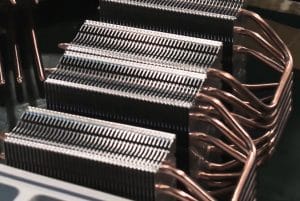 For a long time, electrical thermal management was considered a burden that companies must carry, rather than a benefit to their overall productivity. That’s largely because the few electrical cooling solutions that were traditionally available, such as air conditioning and air compressing units, often proved costly to operate and maintain on a consistent basis. Today, however, companies continue to benefit more from advanced heat exchangers, which are designed to provide industrial-level thermal management for a wide variety of applications. By utilizing simpler and more efficient heat transfer methods, heat exchangers help companies transform thermal management into an advantage. (more…)
For a long time, electrical thermal management was considered a burden that companies must carry, rather than a benefit to their overall productivity. That’s largely because the few electrical cooling solutions that were traditionally available, such as air conditioning and air compressing units, often proved costly to operate and maintain on a consistent basis. Today, however, companies continue to benefit more from advanced heat exchangers, which are designed to provide industrial-level thermal management for a wide variety of applications. By utilizing simpler and more efficient heat transfer methods, heat exchangers help companies transform thermal management into an advantage. (more…)
Ambient Cooling as High-Performance Thermal Management
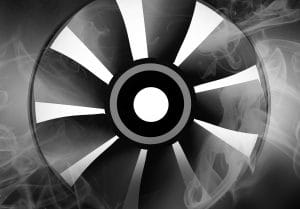 For many years, companies in most industries relied heavily on thermal management solutions that used chilled air to prevent electrical overheating. With the help of solutions such as air conditioners and air compressors, companies could successfully keep multiple electrical enclosures properly cooled. However, while such solutions can effectively lower temperatures inside of electrical enclosures, they can also equate to high energy and maintenance costs the more companies rely on them. Fortunately, this reliance is less important thanks to modern heat exchangers, which turn more natural and efficient ambient cooling processes into high-performance thermal management solutions for a wide variety of applications. (more…)
For many years, companies in most industries relied heavily on thermal management solutions that used chilled air to prevent electrical overheating. With the help of solutions such as air conditioners and air compressors, companies could successfully keep multiple electrical enclosures properly cooled. However, while such solutions can effectively lower temperatures inside of electrical enclosures, they can also equate to high energy and maintenance costs the more companies rely on them. Fortunately, this reliance is less important thanks to modern heat exchangers, which turn more natural and efficient ambient cooling processes into high-performance thermal management solutions for a wide variety of applications. (more…)
Heat Exchangers and the Advancement of Modern Computing
 When companies first began switching their electrical thermal management systems to more efficient and advanced heat exchangers, the benefits they experienced due to more streamlined cooling were significant. Unlike more traditional electrical cooling systems, which relied on the use machinery to chill air and circulate it through enclosures, heat exchangers allowed companies to maintain high-performance cooling while minimizing overall energy and maintenance costs. However, the implementation of more advanced computing technologies also brought about a need for more advanced electrical cooling solutions. Fortunately, heat exchangers have proven more than sufficient at keeping up with the more advanced thermal management needs, making them even more essential for enhancing modern companies’ efficiency. (more…)
When companies first began switching their electrical thermal management systems to more efficient and advanced heat exchangers, the benefits they experienced due to more streamlined cooling were significant. Unlike more traditional electrical cooling systems, which relied on the use machinery to chill air and circulate it through enclosures, heat exchangers allowed companies to maintain high-performance cooling while minimizing overall energy and maintenance costs. However, the implementation of more advanced computing technologies also brought about a need for more advanced electrical cooling solutions. Fortunately, heat exchangers have proven more than sufficient at keeping up with the more advanced thermal management needs, making them even more essential for enhancing modern companies’ efficiency. (more…)
Transferring Heat Enhances the Plastic Mold Cooling Process
 When applied to the plastic mold cooling process, thermal management plays a significant role in a company’s output. Both the quantity and quality of molds produced, as well as the overall costs of production, rely heavily on the capabilities of the company’s plastic mold cooling apparatus. Today, many companies rely on more advanced heat transfer processes, which also serve as the basis for many of the most efficient and effective electrical cooling solutions. With the help of specialized thermal pins, plastic molding companies can enjoy more efficient and consistent plastic mold cooling, improving the overall quantity and quality of their yields. (more…)
When applied to the plastic mold cooling process, thermal management plays a significant role in a company’s output. Both the quantity and quality of molds produced, as well as the overall costs of production, rely heavily on the capabilities of the company’s plastic mold cooling apparatus. Today, many companies rely on more advanced heat transfer processes, which also serve as the basis for many of the most efficient and effective electrical cooling solutions. With the help of specialized thermal pins, plastic molding companies can enjoy more efficient and consistent plastic mold cooling, improving the overall quantity and quality of their yields. (more…)
3 Efficiencies that Heat Exchangers Naturally Enhance
 Companies in different industries define the benefits of streamlined electrical cooling differently. For example, in many manufacturing environments, efficient and eco-friendly electrical cooling can be most beneficial to the company’s overall energy costs and level of productivity. In areas like pharmaceutical packaging and food & beverage manufacturing, the benefits that matter most may also include the higher level of safety and eco-friendliness that heat exchangers provide. In most applications, however, the advantages of streamlined heat exchanger technologies focus mainly on improving key efficiencies while minimizing the overall costs of electrical thermal management. (more…)
Companies in different industries define the benefits of streamlined electrical cooling differently. For example, in many manufacturing environments, efficient and eco-friendly electrical cooling can be most beneficial to the company’s overall energy costs and level of productivity. In areas like pharmaceutical packaging and food & beverage manufacturing, the benefits that matter most may also include the higher level of safety and eco-friendliness that heat exchangers provide. In most applications, however, the advantages of streamlined heat exchanger technologies focus mainly on improving key efficiencies while minimizing the overall costs of electrical thermal management. (more…)
How to Focus on Eco-Friendly Electrical Cooling
 In most common industrial applications, there are obvious ways in which companies can boost their efficiency and lower their environmental impacts. However, few of those ways enable companies to achieve both goals at the same time. In the area of electrical thermal management, however, modern solutions such as heat exchangers have made it possible to both increase the efficiency of technological applications and the eco-friendliness of a company’s overall operations. This is due mainly to their more natural heat transfer principles, which make eco-friendly and efficient electrical cooling much simpler to accomplish. (more…)
In most common industrial applications, there are obvious ways in which companies can boost their efficiency and lower their environmental impacts. However, few of those ways enable companies to achieve both goals at the same time. In the area of electrical thermal management, however, modern solutions such as heat exchangers have made it possible to both increase the efficiency of technological applications and the eco-friendliness of a company’s overall operations. This is due mainly to their more natural heat transfer principles, which make eco-friendly and efficient electrical cooling much simpler to accomplish. (more…)
Technology’s Advancement Since Heat Exchangers
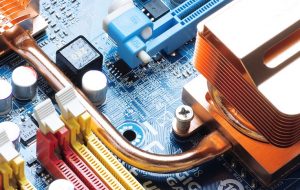 Since the first heat exchanger was created and implemented for industrial use, the principles behind it involved managing electrical waste heat in a more efficient and manageable method than more conventional solutions. Until then, keeping electrical enclosures cooled with air conditioners, air compressors, or similar solutions was the only way for companies to prevent those enclosures from overheating. However, using more natural methods to keep electrical waste heat from accumulating, heat exchangers made electrical cooling much more efficient. As a result, other forms of technology were able to advance even further, without being held back by traditional thermal management constraints. (more…)
Since the first heat exchanger was created and implemented for industrial use, the principles behind it involved managing electrical waste heat in a more efficient and manageable method than more conventional solutions. Until then, keeping electrical enclosures cooled with air conditioners, air compressors, or similar solutions was the only way for companies to prevent those enclosures from overheating. However, using more natural methods to keep electrical waste heat from accumulating, heat exchangers made electrical cooling much more efficient. As a result, other forms of technology were able to advance even further, without being held back by traditional thermal management constraints. (more…)
Impacts of Thermal Management on Overall Productivity
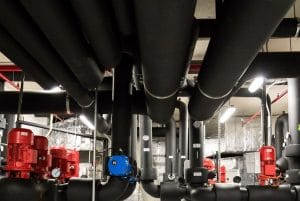 Improving productivity can be a tricky concept for companies, depending on the specific industry they’re in. In most cases, it involves investing in advanced technologies and methods of production, all while balancing that investment with the long-term costs of maintaining the new systems. When it comes to enhancing the productivity of thermal management solutions, maintaining that balance hasn’t always been simple. With more traditional systems, the most effective solutions used to mainly include air conditioning and air compressing equipment, which are often costly to maintain on a consistent basis. However, with more modern solutions such as heat exchangers to continuously transfer the waste heat, enhancing productivity has become a much more efficient process. (more…)
Improving productivity can be a tricky concept for companies, depending on the specific industry they’re in. In most cases, it involves investing in advanced technologies and methods of production, all while balancing that investment with the long-term costs of maintaining the new systems. When it comes to enhancing the productivity of thermal management solutions, maintaining that balance hasn’t always been simple. With more traditional systems, the most effective solutions used to mainly include air conditioning and air compressing equipment, which are often costly to maintain on a consistent basis. However, with more modern solutions such as heat exchangers to continuously transfer the waste heat, enhancing productivity has become a much more efficient process. (more…)
